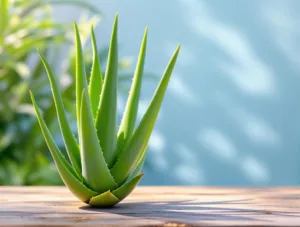The Ultimate Guide to Natural Exfoliants: Smoothing Skin and Cleansing Pores the Organic Way
Introduction
In the quest for radiant, smooth, and blemish-free skin, exfoliation plays a crucial role. While chemical peels and synthetic scrubs dominate the skincare market, natural exfoliants offer a gentler, eco-friendly, and often more affordable alternative. From oatmeal and sugar to fruit enzymes and clays, nature provides an abundance of ingredients that effectively remove dead skin cells, unclog pores, and promote a healthy complexion.
This comprehensive guide explores the best natural exfoliants, their benefits, and how to use them safely. Whether you have sensitive, oily, dry, or combination skin, incorporating these organic solutions into your routine can enhance your skin’s texture and glow without harsh chemicals.
Why Choose Natural Exfoliants?
Before diving into specific ingredients, it’s essential to understand why natural exfoliants are a superior choice for many skincare enthusiasts.
1. Gentle on the Skin
Unlike synthetic scrubs that may contain microplastics or harsh beads, natural exfoliants like rice powder or ground almonds provide a smoother texture that minimizes irritation.
2. Free from Harmful Additives
Many commercial exfoliators contain parabens, sulfates, and artificial fragrances, which can trigger allergies or disrupt the skin’s microbiome. Natural alternatives eliminate these risks.
3. Environmentally Sustainable
Microbeads in conventional scrubs contribute to plastic pollution in oceans. Natural exfoliants, being biodegradable, are an eco-conscious choice.
4. Rich in Nutrients
Ingredients like honey, yogurt, and fruit enzymes not only exfoliate but also deliver vitamins, antioxidants, and probiotics that nourish the skin.
Top Natural Exfoliants and Their Benefits
1. Sugar
Best for: All skin types, especially dry or sensitive skin.
Sugar is a mild physical exfoliant that dissolves easily, making it less abrasive than salt. Its glycolic acid content also helps break down dead skin cells chemically.
How to Use:
- Mix 1 tbsp of fine sugar with honey or coconut oil for a hydrating scrub.
- Gently massage in circular motions, then rinse with lukewarm water.
2. Oatmeal
Best for: Sensitive, irritated, or eczema-prone skin.
Oatmeal soothes inflammation while its saponins cleanse the skin gently. It’s ideal for those with rosacea or post-procedure skin.
How to Use:
- Blend oats into a fine powder and mix with yogurt or aloe vera gel.
- Apply as a mask, leave for 10 minutes, then rinse.
3. Coffee Grounds
Best for: Cellulite reduction and oily skin.
Coffee’s caffeine content stimulates circulation, reducing puffiness and temporarily tightening the skin. Its coarse texture makes it excellent for body scrubs.
How to Use:
- Combine used coffee grounds with olive oil for an invigorating body scrub.
- Focus on areas with cellulite or rough patches.
4. Baking Soda
Best for: Occasional deep cleansing (not for daily use).
Baking soda balances pH and removes excess oil but can be drying, so it’s best for occasional exfoliation.
How to Use:
- Mix a teaspoon with water to form a paste, massage gently, then rinse immediately.
5. Fruit Enzymes (Pineapple, Papaya, Pumpkin)
Best for: Brightening and chemical exfoliation.
Papain (from papaya) and bromelain (from pineapple) dissolve dead skin cells without scrubbing, making them ideal for acne-prone or sensitive skin.
How to Use:
- Mash fresh papaya and apply as a mask for 10 minutes before rinsing.
6. Sea Salt
Best for: Body exfoliation, detoxifying pores.
Rich in minerals, sea salt is excellent for detoxifying but can be harsh on the face. Best reserved for elbows, knees, and feet.
How to Use:
- Mix with coconut oil and essential oils for a spa-like body scrub.
7. Rice Powder
Best for: Brightening and gentle facial exfoliation.
A staple in Asian beauty routines, rice powder softens skin and evens out tone.
How to Use:
- Combine with rose water for a soothing face polish.
How Often Should You Exfoliate Naturally?
- Normal Skin: 2-3 times per week.
- Oily Skin: 3-4 times per week.
- Dry/Sensitive Skin: 1-2 times per week.
Over-exfoliation can strip the skin’s moisture barrier, leading to redness and irritation. Always follow up with a moisturizer.
DIY Natural Exfoliating Recipes
1. Honey & Sugar Lip Scrub
- 1 tsp sugar
- 1 tsp honey
- ½ tsp olive oilMix, gently scrub lips, then wipe off.
2. Yogurt & Oatmeal Soothing Mask
- 2 tbsp ground oatmeal
- 1 tbsp yogurt
- 1 tsp honeyApply, leave for 15 mins, then rinse.
3. Coffee & Coconut Body Scrub
- ½ cup coffee grounds
- ¼ cup coconut oil
- 1 tbsp brown sugarMassage onto damp skin, then shower off.
Potential Risks and Precautions
While natural exfoliants are generally safe, some precautions apply:
- Patch test new ingredients to avoid allergic reactions.
- Avoid lemon juice or undiluted acids, which can cause photosensitivity.
- Do not use on broken skin or active acne wounds.
Final Thoughts: Embracing Natural Exfoliation
Switching to natural exfoliants is a rewarding step toward healthier skin and a cleaner planet. By selecting ingredients tailored to your skin type and exfoliating mindfully, you can achieve a smoother, clearer complexion without synthetic additives.
Pro Tip: Rotate between physical (sugar, oatmeal) and chemical (fruit enzymes) exfoliants for balanced results. Always hydrate post-exfoliation to maintain your skin’s barrier.
Whether you opt for a simple honey scrub or an enzyme-rich papaya mask, nature offers endless possibilities for glowing skin—naturally.
Would you like any modifications or additional details on specific skin concerns?









Add comment